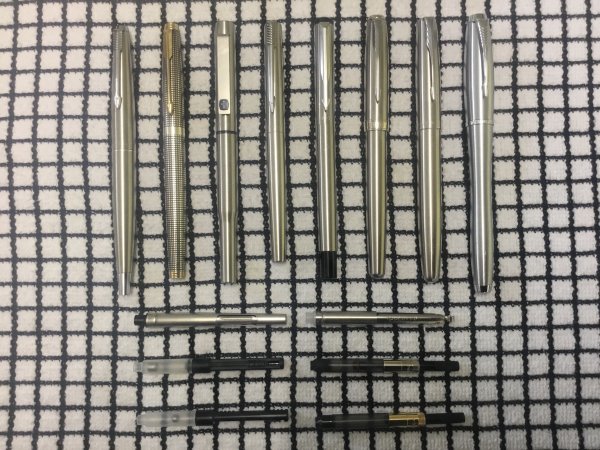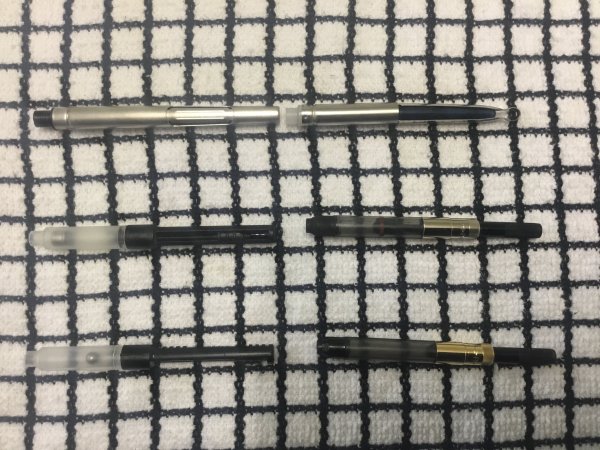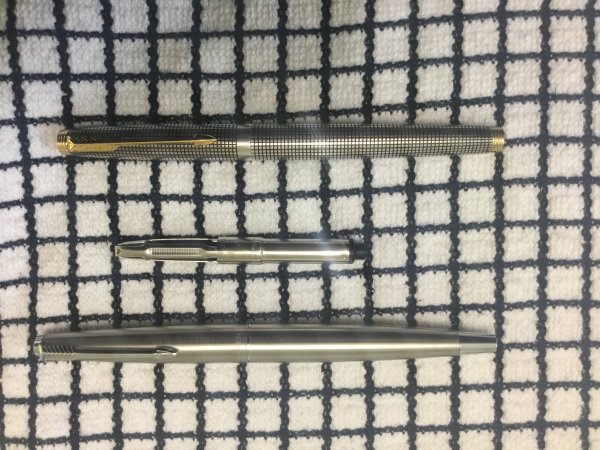Search the Community
Showing results for tags 'parker converter'.
-

Post-1970 Parker converters, and some pens that they fit.jpeg
Mercian posted a gallery image in FPN Image Albums
From the album: Mercian’s pens
This photo shows my post-1970 Parker converters, and the c/c pens that I know that they fit into and work in. Pens L-to-R: Parker 45; Parker 75; Parker 25; Parker 15/Jotter FP; Parker Vector; Parker Sonnet; Parker Frontier; Parker Urban (first, pre-2016,...© Mercian
- 0 B
- x
-
From the album: Mercian’s pens
These are examples of the later models of Parker converter that I own. All of these converters have the same external diameter as Parker’s proprietary long cartridges, so they will fit into, and work in, any Parker c/c pen except for two short-lived models that were made in the 2000s; the Parker ‘...© Mercian
- 0 B
- x
-
- parker converter
- parker converters
-
(and 1 more)
Tagged with:
-
From the album: Mercian’s pens
An example of a (second-generation) 1960s Parker converter, with two pens that I know that it will fit into and work in. Top-to-bottom: Parker 75 (in Ciselé Sterling Silver aka ‘Crosshatch grid’); Second-generation of 1960s Parker squeeze converter; Parker 45 (in the brush...© Mercian
- 0 B
- x
-

Adding Agitator To Parker Piston Converter?
3nding posted a topic in Fountain & Dip Pens - First Stop
Hi everyone, What are your suggestions/ideas/tricks for adding an agitator to a Parker piston converter? From what I can't tell, they can't be taken apart without breaking them although I might be wrong about that. Have you found anything that works well and doesn't come out too easily? Thank yo...- 20 replies
-
- agitator
- parker piston converter
- (and 8 more)
-
I decided to buy a Parker screw type converter as a replacement for the press bar version in one of my 45's. So I looked on Amazon and on ebay and saw many different versions. I decided I wanted one with a metal end that goes into the section, so I found one on Amazon at a reasonable price, ordere...
- 11 replies
-
- parker converter
- converters
-
(and 1 more)
Tagged with:





